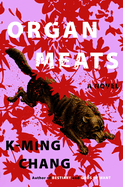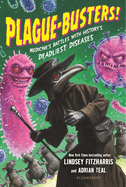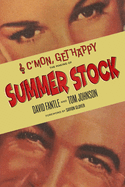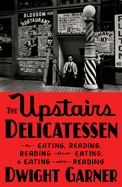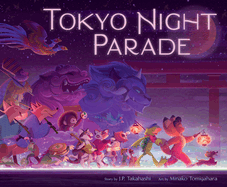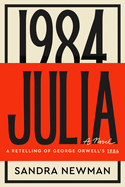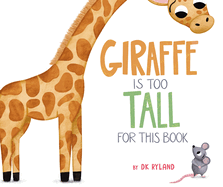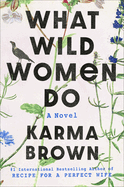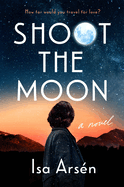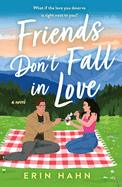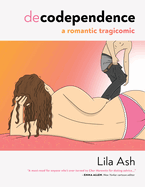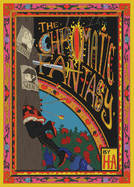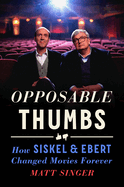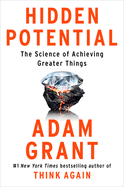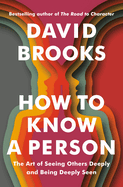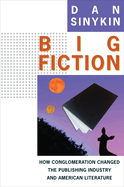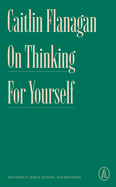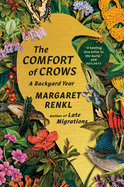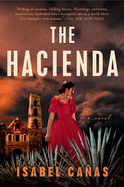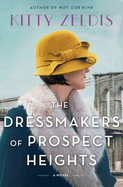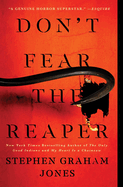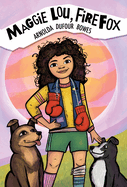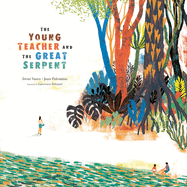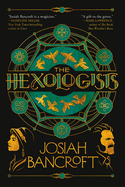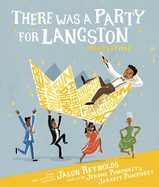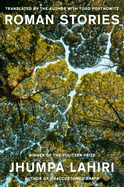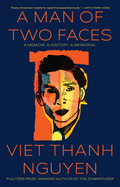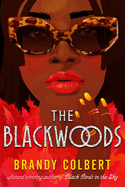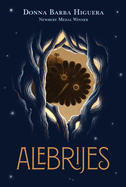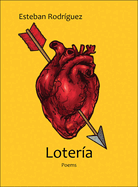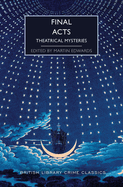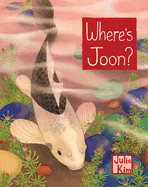Friday, October 27, 2023
Among the standout nonfiction this week: C'mon, Get Happy by David Fantle and Tom Johnson, "a marvelous grab bag of facts, tidbits, and insights"; Dwight Garner's The Upstairs Delicatessen, "a rambunctious ramble across food touchstones from literature, writers' lives, and Garner's own experience"; and Plague-Busters! by Lindsey Fitzharris, illustrated by Adrian Teal, a "fabulously fascinating account of six of the world's most injurious plagues... [that] will likely keep the audience utterly transfixed." Plus so many more!
Have you been thinking of writing a novel? Well, this November marks the 25th year of National Novel Writing Month (NaNoWriMo). You may be surprised by the famous names who've taken part.
Organ Meats
by K-Ming Chang
Critically acclaimed novelist and short story writer K-Ming Chang's Organ Meats follows two girls bound by ties of loyalty, brutality, and longing. Growing up as neighbors, Anita and Rainie pledge themselves to each other by embracing what they see as their heritage: to become dogs who connect themselves with collars of red thread so they will never be apart. But when Rainie's mother tries to sever that connection and Anita falls into a comatose mental state for years, Rainie becomes determined to rescue her friend from her own rotting body--by any means possible.
Chang's writing is as brutal as it is lyrical, never shying away from the beauty of the grotesque. In describing the cementing of Rainie and Anita's bond in the face of the stray dogs they've chosen as their companions, she writes how "[a]bove us, the spit is weaving itself into a silver chandelier, spattering the wall as it swings with our breath." These tenuous moments of suspension recur in Chang's text, emphasizing the thrilling yet precarious tensions of girlhood that intensify the alluring and sometimes toxic female friendships made along the way. And while the fantastical elements of Chang's story give the novel a feverish, dreamlike atmosphere, her relentlessly embodied descriptions ground readers' experience. As Anita and Rainie search for answers in trees, the flesh of dogs, the stories passed down and warped by years and fears, and each other, Chang (Gods of Want; Bestiary) weaves a tapestry of bodies and dreams, fantastical desires, and viscerally material fears. --Alice Martin, freelance writer and editor
Discover: A sometimes nightmarish, often wondrous, and always visceral tale of female friendship, Organ Meats cements K-Ming Chang as a unique and atmospheric literary voice.
Julia
by Sandra Newman
Julia returns the timelessly relevant world of 1984 to readers' attentions with a female protagonist more clever and feeling, and perhaps more cynical, than George Orwell's Winston Smith ever was.
Sandra Newman's retelling matches closely Orwell's familiar and disquieting original. Big Brother is the leader of the nation of Oceania, at war with Eastasia (or was it Eurasia?). Telescreens squawking nonstop propaganda constantly observe every move of the Citizens of Airstrip One, formerly London. Where Orwell offered Julia as colleague, lover, and co-conspirator to his antihero, Winston Smith, here Julia Worthing gets a backstory.
She grew up in Semi-Autonomous Zone 5, previously Kent; had her first affair with a Party member at the age of 14; and won a Hero of the Socialist Family badge for denouncing her mother. As an adult, Julia works in the Ministry of Truth's Fiction Department as a mechanic, repairing and maintaining the machines that design plots for the mind-controlling entertainment of the masses. She lives a straightforward, self-serving life, outwardly obedient to Party regulations and a member of the Junior Anti-Sex League, but is secretly involved in a number of minor sexual affairs, trading in black-market goods for the simple pleasures of real chocolate. Newman's version expands Julia considerably, and appealingly, as a character increasingly wrestling with not only the contradictions between lived experience and the Party's narrative but also questions of right and wrong.
Newman (The Country of Ice Cream Star) offers a tragic and harrowing story in lovely, evocative prose, revealing all the ugliness and beautiful possibility of a world hopelessly scarred by hate and manipulation and yet, somehow, still capable of hope. --Julia Kastner, librarian and blogger at pagesofjulia
Discover: This feminist retelling of Orwell's 1984 brings the original's philosophies, wit, and horror to modern readers with a strikingly reinvented protagonist.
What Wild Women Do
by Karma Brown
Eddie Callaway wanted every woman who attended her Camp Callaway to return home with this truth: "Your wildness is a gift that must remain uncaged." Eddie's mysterious history slowly uproots Rowan's life in the wildly intriguing What Wild Women Do by Karma Brown (Recipe for a Perfect Wife; The Choices We Make; The Life Lucy Knew), a novel that weaves two timelines like the tree branches covering the Adirondack Park in which it's set.
Almost 50 years after Eddie Callaway vanished from her women's retreat in the 1970s, Rowan and her fiancé, Seth, head to a cabin to overcome their creative roadblocks. Seth's novel-in-progress is on the back burner, while Rowan waits for one of her screenplays to take off. Meeting the (very few) locals and traversing the vast natural landscape around their cabin, the couple finds the abandoned Camp Callaway, mysterious stories of the disappearance of its owner, and a clue to a hidden treasure. Their research and a Camp Calloway handbook help them begin to piece together the puzzle of Eddie's enigmatic past, leading Rowan on a journey to find the wild woman within herself.
Both Eddie's and Rowan's timelines expose remarkable moments of self-discovery, women's empowerment, and suspense. Eddie's "wild woman" practices embody 1970s' second-wave feminism, exploring its ability to empower some and provoke others. Eddie's legacy of ambition and strength inspires Rowan to take charge of her own life. Both narratives capture the challenges and greatness of womanhood and the courage it takes to become your authentic self. --Clara Newton, freelance reviewer
Discover: In this suspenseful mystery novel, Karma Brown intertwines the stories of two women, 50 years apart, uncovering the wild women within themselves.
Shoot the Moon
by Isa Arsén
Isa Arsén's heartbreaking debut novel, Shoot the Moon, follows one woman's adventures in physics and love in the early years of the U.S. space program. Annie Fisk--daughter of a scientist who worked on the atomic bomb at Los Alamos--has been fascinated by numbers and space since her childhood in Santa Fe. Following her father's death, Annie and her mother grow ever further apart. Annie throws herself into her studies, attending college in San Antonio and finding both academic purpose and her first love. But the pull of NASA is stronger than the attraction of her artist paramour. Annie moves to Houston after graduation, taking a job as a NASA secretary until her talent for calculations catches the eye of her superiors. Shortly after Annie is promoted to programmer, she discovers an anomaly in her office building that will test the limits of both her brain and her heart.
Arsén's narrative shifts back and forth in time, presenting a mosaic of Annie's life: her childhood hours of solitude in the back garden; her heady college years in the company of artists and other students; her time at NASA as a secretary and her growing attraction to a young engineer; and her determination to pursue her own scientific project, despite various obstacles. Arsén asks big questions about love and duty, the human cost of scientific inquiry, and the difficulty of moving on from past trauma--but she also tells a cinematic story of fierce dedication and blazing love. --Katie Noah Gibson, blogger at Cakes, Tea and Dreams
Discover: Isa Arsén's smart debut novel is a cinematic story of a woman pursuing both scientific inquiry and love at NASA in the 1960s.
Romance
Friends Don't Fall in Love
by Erin Hahn
Erin Hahn (Never Saw You Coming; You'd Be Mine) presents a delightfully sexy homage to country music in Friends Don't Fall in Love, a witty friends-to-lovers romance. Lorelai Jones was an elementary school teacher until a big break made her a country music superstar. But then, horrified by yet another school shooting, one that hit way too close to home, she sang a protest song that infuriated her fans. Lorelai lost her concert tour; her famous fiancé broke up with her via an Instagram Reel; and her career was essentially over.
Since then, she's returned to teaching in Michigan, but she's stayed in touch with her friend Craig "Huck" Boseman, one of her former fiancé's bandmates. Lorelai has been out of the music scene for several years, a time in which Huck has started producing music. Lorelai still has music in her heart, so she decides to take the plunge and moves back to Nashville, happy to be near Huck and playing music again. But as they spend more time together, she finds herself wondering if maybe Huck could be more than just her friend and producer.
Anyone who has ever wanted a second chance at a big dream, or who has a passion for music, is sure to enjoy watching Huck and Lorelai hesitantly head toward a romantic relationship. Witty and real, with characters who struggle with everything from cancel culture to celiac disease, Friends Don't Fall in Love is a wonderfully topical romance. --Jessica Howard, freelance book reviewer
Discover: In this witty friends-to-lovers romance, a country singer and a music producer can't quite decide if they have something more than friendship.
Graphic Books
Decodependence: A Romantic Tragicomic
by Lila Ash
New Yorker cartoonist Lila Ash makes a revealing, surprisingly humorous graphic debut with Decodependence, with her vulnerable intention immediately divulged in her clever title: to decode her codependence. Opening with her first crush in fourth grade and capturing the toxic relationships that defined her adulthood, Ash both recounts and analyzes her actions in detailed full-color panels, all neatly arranged--as if the order on her pages could bring her life into balance. Ash announces each new chapter on the right, synchronized with text on the left describing a facet of codependent behavior. "Codependents often do not perceive themselves as lovable or worthwhile" prefaces "chapter two: daddy issues," in which she relives her parents' divorce and her devolving connection to her increasingly unreliable father. "Codependents often have trouble setting healthy priorities and boundaries" introduces "chapter four: a line in the sand," which recalls an inappropriate relationship with a guitar teacher. Her ongoing recovery continues to be a work in progress in "chapter eleven: a conclusion in two parts," as she announces: "Turns out codependents might have hope after all." She diligently works--despite "off days, often"--with the help of therapy, medications, and self-care to reclaim her autonomy.
Readers already familiar with Ash's cartoons in multiple publications will certainly be drawn to her memoir. And an official mental health diagnosis is hardly necessary to connect with the material here. While Ash revives her faltering youthful selves, she's the first to find humor amid the cringing regrets, and to allow a chuckle or two--or many. As voyeuristic as readers might feel with her most baring panels, so, too, will they likely encounter compassion and understanding. --Terry Hong, BookDragon
Discover: Lila Ash's debut graphic memoir reveals a raw, often unexpectedly funny, journey through toxic relationships and her ongoing recovery from codependence.
The Chromatic Fantasy
by H.A.
The Chromatic Fantasy, the first graphic novel from H.A., combines high-fantasy art styles, swashbuckling adventures, and contemporary dialogue. This story of queer love goes beyond trans pain and joy to represent trans healing. In a convent dedicated to controlling the God of Unearthly Fire, Jules lets the god--otherwise known as the devil--into his thoughts. Jules, longing to live in pleasure as a man rather than engage in a regimented life as a nun, submits to the devil's sexual desires and gains his freedom from the convent. But Jules is disappointed by the reality of his new life--until he meets Casper, another trans man living a life of crime. After their adversarial meeting turns to mutual admiration and flirtatious banter, Jules discovers that the devil's claim to deliver an infinitely more satisfying sexual experience than any human could is false--Casper gives him pleasure and satisfaction unlike anything the devil ever did. Several near-death experiences later, Jules and Casper heal from the messages of their youth together and figure out what family means to them.
Highly saturated artwork fills the pages of this graphic novel, with key moments highlighted by a startling switch to softer, paler colors. The addition of depth and shading to Jules's and Casper's bodies during their physical encounters, in contrast to the unshaded style in the rest of the book, heightens the sexual intensity. Passion and tenderness permeate this eminently satisfying story of adventure and inner peace. --Dainy Bernstein, postdoc in children's literature, University of Illinois Urbana-Champaign
Discover: Equal parts epic and intimate, this graphic novel about a trans man fighting for his right to a happy life delivers the perfect happy ending.
Biography & Memoir
The Upstairs Delicatessen: On Eating, Reading, Reading About Eating, and Eating While Reading
by Dwight Garner
With the high-spirited charmer The Upstairs Delicatessen, book critic Dwight Garner merges two loves of his life, although the union didn't require much of a mental leap. As he puts it, "Reading and eating, like Krazy and Ignatz, Sturm und Drang, prosciutto and melon, Simon and Schuster, and radishes and butter, have always, for me, simply gone together."
The narrative is a rambunctious ramble across food touchstones from literature, writers' lives, and Garner's own experience. Shaped by his 1970s childhood in the South, Garner's tastes run toward the proudly unconventional and resolutely fuss-free (e.g., he's "on the record as being perhaps America's most ardent consumer of the peanut butter and pickle sandwich"). Chapters are organized by each of the three daily meals, plus there's a chapter dedicated to shopping and another to alcoholic drinks.
Throughout The Upstairs Delicatessen, he provides a running commentary on writers' food fancies, as well as those of their characters. Garner crowns Émile Zola's The Belly of Paris "Western literature's great groceries novel." He paraphrases George Orwell's philosophy on tea, and reproduces a paragraph on soft-boiled egg-making in Toni Morrison's novel Song of Solomon. He states that "Updike was a pickle guy," whereas Barbara Kingsolver was probably no egg salad woman: Garner approvingly offers the line "Hell is other people, with egg salad" from her novel Unsheltered.
Garner has already proved himself to be the great aggregator with Read Me: A Century of Classic American Book Advertisements and Garner's Quotations: A Modern Miscellany; but in The Upstairs Delicatessen, he becomes a character appealing enough to rival those conceived by the writers he references. --Nell Beram, author and freelance writer
Discover: This high-spirited charmer is a rambunctious ramble across food touchstones from literature, writers' lives, and the author's own experience.
Opposable Thumbs: How Siskel & Ebert Changed Movies Forever
by Matt Singer
Cinephiles will find much to savor in Opposable Thumbs: How Siskel & Ebert Changed Movies Forever, a comprehensive, immensely entertaining biography by film critic Matt Singer. In meticulous detail, he probes the lives of the legendary film critics and newspaper rivals, whose opinions became as popular as the movies they reviewed in print--and, later, fervently debated on TV--from the 1970s to the late 1990s.
Throughout their partnership, Siskel and Ebert remained "mortal enemies. Each considered it an essential aspect of their job to beat the other: to write the best review, to land the biggest interview, to score the best scoops. And they took their jobs very seriously." Despite this seriousness, David Letterman, who often hosted the duo on his late-night talk show, once remarked that their popular appeal was due to their honest, passionate debates, and how they broke "the stuffy traditions of old-fashioned print film criticism." The trademark of Siskel and Ebert's film reviewing was a simple thumbs-up or thumbs-down rating system.
Singer paints a fascinating portrait of the critics, sharing quotes and stories of how their upbringings developed their personalities; their respective roads to journalism and film criticism; and what they each brought to the reviewing table--how their contentious relationship actually increased their viewership. This thoroughly researched narrative makes a strong case that Siskel and Ebert were, as Ebert once put it, true "film lovers" and "fans." That innate passion is what led to their overwhelming, two-thumbs-up success and their enduring appeal. --Kathleen Gerard, blogger at Reading Between the Lines
Discover: Opposable Thumbs is a thoroughly entertaining, deeply researched biography of rival movie critics Gene Siskel and Robert Ebert and how they came to define modern film criticism.
Business & Economics
Hidden Potential: The Science of Achieving Greater Things
by Adam Grant
In Hidden Potential: The Science of Achieving Greater Things, Adam Grant (Originals) presents evidence-based tools for unlocking the social, emotional, and behavioral skills essential to success. Grant's fifth book for adults, enhanced with stories from the fields of architecture, music, sports, and academics, is a guide to becoming the person the reader desires to be, no matter what natural talents they may or may not possess. The author is an acclaimed organizational psychologist whose own most meaningful accomplishments have come in areas where he started with "serious shortages of talent." When people judge potential, he explains, they make the mistake of focusing on starting points, the abilities that are immediately visible. Yet potential is not a matter of where they start but of how far they travel. In Grant's case, he went from being "the worst diver in my school to ranking among the best in the country."
Opening with the premise that character skills "predict and produce success in life," as economist James Heckman once put it, Grant shares the example of one of the world's oldest animals, the sea sponge, to demonstrate how the "capacity to absorb, filter, and adapt" is the type of skill that can catapult people to unexpected heights. It's never too late to strengthen one's character, Grant writes, and people can learn to become more determined, disciplined, and proactive with sustained practice and by constructing for themselves the right sort of scaffolding for support. Hidden Potential challenges fundamental assumptions about the capabilities and promise existing within everyone; fortunately, for underdogs and late bloomers everywhere, it offers realistic, actionable strategies for achieving one's aspirational goals. --Shahina Piyarali, reviewer
Discover: An acclaimed organizational psychologist presents evidence-based tools and actionable strategies for achieving one's aspirational goals.
Social Science
How to Know a Person: The Art of Seeing Others Deeply and Being Deeply Seen
by David Brooks
David Brooks (The Second Mountain; The Road to Character) has established himself as a distinctive voice, moderate in an era of partisanship, questioning in an age of platforms and posturing. In How to Know a Person: The Art of Seeing Others Deeply and Being Deeply Seen, Brooks extends his line of inquiry into how humans can improve their relationships and build a kinder, more equitable society. These are lofty goals, and Brooks would likely be the first to admit he doesn't always succeed; however, the overall effect of How to Know a Person is positive. His tone marries a gentle confidence with an appropriate amount of self-doubt. The book offers a collection of wisdom from thinkers as varied as Frederick Buechner and Iris Murdoch, as well as practical steps to see and be seen by others.
Brooks acknowledges the importance of an openhearted posture but argues "it is not enough. People need social skills." These skills are not the niceties offered by manners experts, however. They are a "series of small, concrete social actions," acts of grace and caring which could include knowing "how to sit with someone who is suffering" or "how to let someone down without breaking their heart." Brooks insists: "Each person is a mystery. And when you are surrounded by mysteries, as the saying goes, it's best to live life in the form of a question." How to Know a Person is full of excellent questions, thoughts, and ideas that will help readers probe the mysteries of themselves and those they meet. --Sara Beth West, freelance reviewer and librarian
Discover: David Brooks's practical and inspiring How to Know a Person is about trying to do and be better in a hurting world that is hungry for connections.
Essays & Criticism
Big Fiction: How Conglomeration Changed the Publishing Industry and American Literature
by Dan Sinykin
For some people, thrill rides are found at Disneyland. For certain types of readers, a thrill ride can be found in Big Fiction: How Conglomeration Changed the Publishing Industry and American Literature, Dan Sinykin's scintillating take on the David and Goliath battle, in which free-spirited publishers fought to hold their own against corporate giants.
Publishers have always adapted with the times: postwar prosperity, 1970s inflation, and so on. But their biggest reckoning was surely with conglomeration. It was an era that began around 1960, and Sinykin (American Literature and the Long Downturn) writes cogently and persuasively of its ripple effects on novels like E.L. Doctorow's Ragtime, David Foster Wallace's Infinite Jest, and Joan Didion's The Last Thing He Wanted. In Sinykin's words, Big Fiction tells "a single story--with many subplots--about U.S. fiction since 1960," and his cast comprises both unheralded industry insiders (editors, agents, publicists) and household-name authors, among them Stephen King, Danielle Steel, and Toni Morrison.
Despite Sinykin's fulsome admiration for writers, it is his ambition to "break our habit of romanticizing authorship and begin instead to see the author through the colophon's portal." He devotes chapters to mass market, trade paperback, nonprofit, and, finally, independent presses, with the "obstinate anachronism" W.W. Norton as the vanquishing underdog: it's the only big indie trade house left standing at the time of this book's writing. In Sinykin's distillation: "Why did bestsellers and prize winners become segregated? Follow the money." The most inspiring aspect of Big Fiction is its reporting on writers who didn't. --Nell Beram, author and freelance writer
Discover: In this scintillating take on the David and Goliath battle, free-spirited publishers fight to hold their own against corporate giants.
On Thinking for Yourself: Instinct, Education, Dissension
by Caitlin Flanagan
Caitlin Flanagan (Girl Land) is a staff writer for the Atlantic and is known for her willingness to engage thorny subjects in unconventional ways. Her ability to set aside preconceived notions and objectively engage a subject is on full display in On Thinking for Yourself: Instinct, Education, Dissension. This collection of seven previously published essays, what she calls a "little book... of essays... that emanate from my stubborn desire to think for myself," addresses a wide range of subjects, including abortion, free speech, fraternities, and her own diagnosis with cancer. Holding them together is Flanagan's effort to answer the question: "And what is the best argument of the other side?"
In pursuit of truth, Flanagan even points the finger at her own field, raising questions on how major media outlets cover breaking news in "The Media Botched the Covington Catholic Story." At the heart of the set is perhaps the most controversial but also the most effective: "The Dishonesty of the Abortion Debate." Setting aside political narratives, Flanagan argues, the "truth is that the best argument on each side is a damn good one, and until you acknowledge that fact, you aren't speaking or even thinking honestly about the issue. You certainly aren't going to convince anybody. Only the truth has the power to move." Though inconsistent in spots, On Thinking for Yourself is a great addition to the ongoing discourse around the value of perspective-taking, perfect for those hoping to elevate the approach to conversations about difficult subjects. --Sara Beth West, freelance reviewer and librarian
Discover: On Thinking for Yourself is a great addition to the ongoing discourse around the value of perspective-taking, perfect for those hoping to elevate the approach to conversations about difficult subjects.
Nature & Environment
The Comfort of Crows: A Backyard Year
by Margaret Renkl
In her luminous third book, The Comfort of Crows, Margaret Renkl (Graceland, at Last; Late Migrations) takes readers through the details of a year in her Nashville neighborhood. Elegant, lucid essays follow the changing seasons, Renkl musing on the migratory and nesting patterns of birds, the encroaching effects of climate change, her own evolving family structure, and the incremental shifts of flora, fauna, and light. "Here is the world I need," Renkl writes, "a world that exists far beyond the impulse to scroll and scroll." The Comfort of Crows, lavishly illustrated with mixed-media collages by her brother, Billy Renkl, invites readers to explore the details of nesting bluebirds, maple trees, garden grubs, sunsets, and Renkl's affection for the birds of the book's title. Though she acknowledges crows' association with death, she also insists that they are "smart and brave and loyal." As she enters a new year, Renkl "cling[s] to the crow's promise of metamorphosis."
Beginning in winter, when many plants are dormant, Renkl nonetheless proves that her nearby landscape is very much alive. Ailing foxes, hungry birds, sunbathing turtles, and her own dog's "Marvelous Nose" remind Renkl and her readers to pay attention to winter's denizens. As the calendar turns toward spring, Renkl records various birdsongs, the shifting light and weather, and her own impatience with waiting for warmer days.
The Comfort of Crows celebrates the beauty and durability of nature's age-old cycles and the habits of wild creatures, and it urges human beings to care for these same creatures--before some of them disappear altogether. --Katie Noah Gibson, blogger at Cakes, Tea and Dreams
Discover: Margaret Renkl's elegant, lucid third book of essays takes readers through the cycle of a year in the wild places surrounding her Nashville home.
Performing Arts
C'mon, Get Happy: The Making of Summer Stock
by David Fantle and Tom Johnson
Books about canonized movie musicals like Singin' in the Rain are easy to justify. But why Summer Stock, an MGM confection from 1950 that doesn't tend to make anyone's short list of favorites? David Fantle and Tom Johnson (Hollywood Heyday) have the answer. In the high-stepping C'mon, Get Happy: The Making of Summer Stock, they reveal that the movie's backstory "contains enough drama, heartache, and genuine selflessness to fuel the plots of a score of MGM melodramas."
When Judy Garland reported for duty as Summer Stock's female lead, she was fresh from rehab and apparently feeling it. Chronically tardy and frequently absent, she was threatened with suspension. In one of many archival interviews conducted by the authors, director Charles Walters suggests that making the film gave him an ulcer. But the show went on, and the resulting product, which featured leading man Gene Kelly's favorite solo dance routine and Garland's now iconic song "Get Happy," did well with critics and audiences alike. Even so, MGM didn't renew Garland's contract after she completed the film.
C'mon, Get Happy has a catchall quality: a single on-the-set chapter is flanked by individual chapters devoted to cast biographies, musical numbers, and so on. It all adds up to a marvelous grab bag of facts, tidbits, and insights, including from some modern-day showbiz folk. What Fantle and Johnson say about Kelly's films can be said about golden age musicals in general: their "sunny, can-do optimism... helped define the American century." C'mon, Get Happy enhances that definition. --Nell Beram, author and freelance writer
Discover: David Fantle and Tom Johnson present a marvelous grab bag of facts, tidbits, and insights about a 1950 Judy Garland/Gene Kelly movie musical whose production drama makes quite a story.
Now in Paperback
The Hacienda
by Isabel Cañas
Isabel Cañas takes readers to the 1823 Mexican countryside in her debut, The Hacienda, a dark gothic novel in which a house is haunted by more than just the supernatural. Set right after the Mexican War of Independence, The Hacienda follows Beatriz, a young woman trying to build a better life for herself after her father is executed. After suffering at the hands of relatives who disdain her for her mixed heritage, Beatriz marries Don Rodolfo Solórzano and leaves the city for what she assumes will be a stable life as mistress of a thriving estate.
What she finds instead is an empty, poorly maintained, menacing house and a sister-in-law who seems to hate her on sight. Determined to make the best of things, Beatriz begins restoring the gardens, furnishing the house and attempting to settle into the pueblo. The house has other ideas: "Darkness clawed at me; cold hands yanked my hair, pawed my nightdress."
Desperate for help, Beatriz appeals to the local church, but only the young mestizo priest Andrés believes her. As Beatriz spirals, sleepless and terrified, into possible madness, she uncovers secrets just as monstrous as the house about her husband, his dead first wife, his sister and maybe even Andrés.
The pages of The Hacienda are drenched in these secrets, but also in the real-life horrors of colonialism, patriarchy and the complicated and harmful casta system that reverberates through the generations. Cañas's writing is immersive, and she skillfully builds a robust sense of tension and terror. This chilling read exposes the rotting soul of colonialism and manages to be wildly entertaining while doing so. --Suzanne Krohn, librarian and freelance reviewer
Discover: The Hacienda is a chilling and immersive gothic suspense set in 1823 Mexico, where a house is possessed by supernatural forces and the horrors of Spanish colonialism.
The Dressmakers of Prospect Heights
by Kitty Zeldis
Kitty Zeldis (Not Our Kind) expertly braids the lives of three women in her second historical novel, The Dressmakers of Prospect Heights. Catherine Berrill, happily wed to a kind man, is desperate for a child to complete her vision of a family. But a stillbirth leaves her devastated, both unable and unwilling to move forward. Down the street, dressmaker Beatrice Jones, newly arrived from New Orleans, has a carefully guarded secret that connects her to Catherine's past. Beatrice's young ward, Alice, is gifted with a needle but unschooled in the ways of the world, and her impulsivity combined with her naivete will lead to unforeseen consequences for all three women.
Zeldis brings 1920s Brooklyn to vivid life, rendering the neighborhood of Prospect Heights and the one-of-a-kind creations in Bea's shop in lush detail. She takes readers back to Bea's previous life (and career as a madam) in New Orleans, and even farther back to her childhood in Russia, weaving the flashbacks into the main narrative. Zeldis sensitively explores the more difficult sides of motherhood and daughterhood, including Catherine's prickly relationship with her mother, Meredith; the realities of postpartum depression; and the limited options for women lacking either husbands or money. The complex motivations of all three women--guilt, love, loneliness, self-preservation and revenge--drive Zeldis's story, resulting in an odd but unbreakable bond between Bea, Alice and Catherine. Though she doesn't shy away from challenging topics, Zeldis's novel, like the relationships at its center, ends on a note of beauty and hope. --Katie Noah Gibson, blogger at Cakes, Tea and Dreams
Discover: Kitty Zeldis's second historical novel explores the complex connections between three women in 1920s Brooklyn.
Don't Fear the Reaper
by Stephen Graham Jones
Every good slasher needs a nail-biting sequel as clever as the second entry in the Indian Lake trilogy. Don't Fear the Reaper by Stephen Graham Jones (The Only Good Indians; Night of the Mannequins) follows My Heart Is a Chainsaw and brings back Jennifer Daniels (formerly known as Jade) in Proofrock, Idaho, four years after the Independence Day Massacre. Accused of multiple crimes related to those events and cleared of everything except damaging federal property, for which a deal has been struck on the condition she stay out of trouble, Jennifer has started a new life. No longer will she be the slasher-movie superfan, laden with guilt for what happened when her slasher dreams came true. But just as she returns to town, a convicted serial killer known as Dark Mill South escapes nearby. Now Jennifer and Letha, whom Jennifer was once convinced would be the "final girl," destined to take down the last slasher, must use all their combined slasher-movie knowledge to get one step ahead of the new killer and back up whoever the new final girl might be. But Dark Mill South knows the slasher playbook just as well as they do.
Like its prequel, Don't Fear the Reaper is a gory romp full of gallows humor. This second novel, a love letter to the slasher genre, continues to interrogate its clichés and raise questions about who is and isn't allowed to be a heroine. Readers will be eager to see what's in store for book three. --Kristen Allen-Vogel, information services librarian at Dayton Metro Library
Discover: Jade's battles to stop the slashers continue with lots of cinematic gore and the sharpest of graveyard wit.
Children's & Young Adult
Plague-Busters!: Medicine's Battles with History's Deadliest Diseases
by Lindsey Fitzharris, illus. by Adrian Teal
The titular "deadly diseases" should draw young readers into this fabulously fascinating account of six of the world's most injurious plagues, and the bizarre treatments for the mysterious sicknesses will likely keep the audience utterly transfixed. Adult author Lindsey Fitzharris (The Facemaker) and cartoonist Adrian Teal join the children's book world with the savvy, intriguing Plague-Busters!, about medicine's ghastly and astounding past.
The middle-grade work explores the history of six diseases: bubonic plague, smallpox, rabies, tuberculosis, cholera, and scurvy. Each chapter focuses on one epidemic, offering riveting details and hilarious commentary about the outbreaks, researchers, and evolution of treatments. The authors open with a frightful story about the spread of bubonic plague: "Using gigantic wooden catapults, the [Mongolian] army begins flinging the diseased bodies of dead soldiers over the city walls to terrify and kill Caffa's citizens." Fitzharris's text goes on to describe the origins of terms like quarantine and vaccination and even how the British earned the nickname "limeys" (they used limes to ward off scurvy). Text boxes appear throughout the book sharing stories related to the diseases and each chapter concludes with a list of famous individuals who died--or are suspected of dying--from the malady.
Teal's stylized artwork--including many of his signature caricatures--is rendered in red, white, and black, and adds an additional humorous element to the work, softening some of the grotesqueness connected to deadly diseases. Plague-Busters! is chock full of awesomely appalling medical history that is sure to delight audiences, and possibly even spark interest for some future pathologists. --Jen Forbus, freelancer
Discover: The macabre becomes magnetic in a captivating, eye-opening history of the world's deadliest diseases.
Tokyo Night Parade
by J.P. Takahashi, illus. by Minako Tomigahara
J.P. Takahashi's debut picture book is a multilayered story, both jubilant and poignant, that captures a girl's return to the hyakkiyagyō (the Night Parade of One Hundred Demons) in her former home of Tokyo.
Tokyo Night Parade features a brown-skinned girl living in New York City who returns to Tokyo, her former home, to visit her grandfather. There, she participates in the hyakkiyagyō, in which supernatural creatures, the yōkai, celebrate in the streets. Eka--dressed as a kitsune, or wild fox spirit--meets the kappa, an old friend and her guide for the parade. By book's end, Eka joins the "glorious racket" of the revelry with "her monsters": "They sing. They speak. They hoot. They screech. And," as the sun peeks over the horizon, "they dance."
Takahashi based Tokyo Night Parade on her own "experience growing up African American and Japanese in the US," conveying with poignancy Eka's momentary sorrow that "Japan is too far away to keep visiting." She depicts Eka describing the yōkai to her baffled American classmates, expressing the struggle of many immigrants to capture the cultures they leave behind. It is clear that illustrator Minako Tomigahara is also an animator: her cinematic, atmospheric illustrations, dominated by lavender and indigo shades of night, look like the stills of an animated film and reveal surprises for observant readers (such as creatures in the clouds). Her imaginative depictions of the unconventional yōkai--a two-headed pheasant, a "lion dog," and more--are beguiling. This deeply felt and nuanced story leaves much for child readers to ponder. --Julie Danielson, reviewer and copyeditor
Discover: This multilayered story, both jubilant and poignant, captures a girl's return to the hyakkiyagyō, or the Night Parade of One Hundred Demons, in her former home of Tokyo.
Giraffe Is Too Tall for This Book
by DK Ryland
In 2011, Hervé Tullet's Press Here broke new ground in meta picture books: it goaded young readers to press, tilt, and otherwise interact with its pages in order to (theoretically) bring about a desired outcome. Well, Giraffe Is Too Tall for This Book--DK Ryland's smashingly good debut picture book--does this and introduces another variable: a darling animal cast.
Giraffe Is Too Tall for This Book begins with a problem. The six animal pals occupying a two-page landscape spread simply don't fit: Giraffe's head can't be seen because (the idea is) it's poking up and beyond the top edge of the page. The snake has a thought: "Reader, can you turn the book to the right so it'ssss tall?" Alas, the reader's compliance leads to a six-animal pileup. Next comes more brainstorming, and even some literary criticism. Says the cheetah to Giraffe: "Do you really want to fit in this book? I mean, what is it even about?" The ideas keep flowing, the characters continue to appeal to readers, and the problem is ultimately solved... for Giraffe if not the elephant: "I think I might be too wide for this book."
Ryland juggles six trains of thought, not to mention six widely varying animal physiques, but the story is a cinch to follow because she sets her digital illustrations against a neutralizing white backdrop, and she distinguishes the animals' remarks with color-coordinated dialogue balloons. Giraffe Is Too Tall for This Book is a primer in team problem-solving in which readers are entrusted with the ultimate honor: an invitation to help. --Nell Beram, freelance writer and YA author
Discover: In this smashingly good meta picture book, six animal pals need the reader's assistance in getting them to fit comfortably within a two-page spread.
Maggie Lou, Firefox
by Arnolda Dufour Bowes, illus. by Karlene Harvey
A bold Indigenous heroine steps into the ring in Maggie Lou, Firefox, a funny, upbeat children's fiction debut from Métis author Arnolda Dufour Bowes, illustrated by Karlene Harvey (Every Child Matters).
Twelve-year-old Métis girl Maggie Lou has no shortage of spirit, which leads to Moshôm, her grandfather, nicknaming her "Firefox." Her ambition, zest for life, and humor propel Maggie Lou through new adventures in three stories. In "Boxer in a Tutu," Moshôm remarks, "That girl's got too much fire for her own good," then offers Maggie Lou boxing lessons after exuberant attempts at boxing and WWE-style wrestling with her siblings lead to mild property damage. The second story, "A Girl and Her Hammer," sees Maggie Lou again trying on a traditionally male activity as she joins her father's construction crew to learn the skills needed to build a three-level dog mansion. She explores her family's hunting tradition in the final story, "Prairiewalker, Sister of Bushwalker," in which her uncle and older brother take her on her first deer hunt, and Maggie Lou runs afoul of a moose.
Maggie Lou approaches life with a can-do attitude, confidence, and a helping of sass. Some acquaintances call her bossy and stubborn, but her adult relatives support her strength. Harvey's black-and-white line art of Maggie Lou mid-adventure adds charm to each story. Bowes uses Métis words and incorporates traditional beliefs into these humorous tales that should be enjoyed by middle-grade readers who appreciate slice-of-life stories. --Jaclyn Fulwood, youth experience manager, Dayton Metro Library
Discover: A Métis girl boldly approaches boxing and life in three humorous, slice-of-life stories.
The Young Teacher and the Great Serpent
by Irene Vasco, illus. by Juan Palomino, transl. by Lawrence Schimel
Colombian author and educator Irene Vasco and Mexican illustrator Juan Palomino join forces once again (after Letters in Charcoal) to create The Young Teacher and the Great Serpent, an inventive contemporary picture book that extols the value of traditional customs, languages, and art.
The "young teacher" arrives at the Amazonian village of Comunidad Las Delicias after four days of arduous travel. It is a "lovely place on the banks of the river" where "around fifty Indigenous families" live, and the children's school is "nothing more than a straw roof that shelter[s] some chairs." The teacher builds a shelf for her precious books, and proceeds to teach the children in Spanish, though the village adults speak an unnamed language. One morning, the children refuse to attend school: "The great serpent is on its way! It's angry because the colonizers have built all along the riverbank." The teacher doesn't believe in the serpent until she experiences it firsthand: a storm makes the river turn "into a great serpent of mud." The school--books included--is swept away. The despairing teacher is ultimately taught a valuable lesson by the women of the village who, knowing how to deal with the great serpent, have cloth books that preserve their own stories and language.
Lawrence Schimel ably translates Vasco's folkloric text from the Spanish. Palomino's digital illustrations are gloriously detailed with intense greens, deep oranges and browns, and varied yellows. Especially appealing is Palomino's double-page spread of the embroidered pictures made by the women, featuring all manner of creatures. A wonderful read-aloud that serves as a gateway to the world of folklore. --Melinda Greenblatt, freelance book reviewer
Discover: An unusual story of true cultural exchange where Indigenous people have much to offer an educator coming from an urban center.
Shelf's October Stars
The Writer's Life
Write that Novel in 30 Days!
What do Rainbow Rowell's Fangirl (Wednesday Books, $10.99), Elizabeth Acevedo's With the Fire on High (Quill Tree, $12.99), and Erin Morgenstern's The Night Circus (Anchor, $17) have in common? Their authors were all participating in NaNoWriMo.
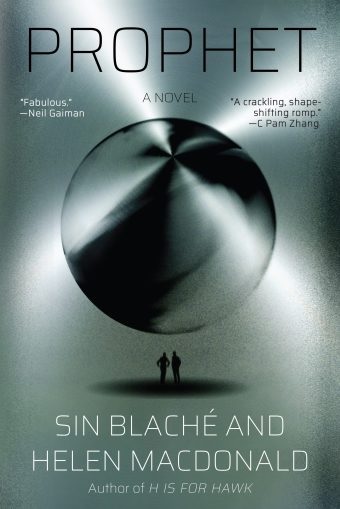 November is National Novel Writing Month (NaNoWriMo), now headed into its 25th year of supporting writers as they complete their novels. Since 1999, more than four million writers around the world have signed up for NaNoWriMo's flagship project: the goal of writing 50,000 words during the month of November, the largest global writing event. Just this year alone, two books created as part of NaNoWriMo were published: veteran author Helen Macdonald collaborated with debut author Sin Blaché for their book Prophet (Grove, $29); and The Davenports by Krystal Marquis (Dial, $19.99).
November is National Novel Writing Month (NaNoWriMo), now headed into its 25th year of supporting writers as they complete their novels. Since 1999, more than four million writers around the world have signed up for NaNoWriMo's flagship project: the goal of writing 50,000 words during the month of November, the largest global writing event. Just this year alone, two books created as part of NaNoWriMo were published: veteran author Helen Macdonald collaborated with debut author Sin Blaché for their book Prophet (Grove, $29); and The Davenports by Krystal Marquis (Dial, $19.99).
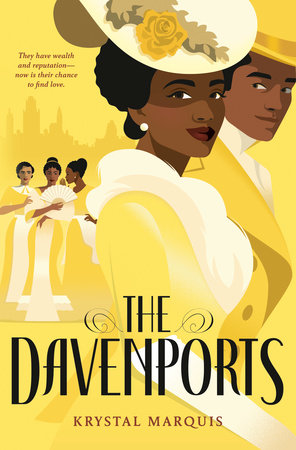 NaNoWriMo started in July 1999, when founder Chris Baty invited 20 of his friends to join him on a creative venture: to write 50,000 words of a novel together in one month. The following year, 140 people participated; by 2001, 500 had joined. This year, NaNoWriMo expects approximately 400,000 writers to participate--including more than 95,000 students and educators in K-12 classrooms as part of NaNoWriMo's Young Writers Program, which began in 2005. Those participating in the Young Writers Program receive guidance for young people, both in classrooms and independently, to set individual word-count goals, and to divide their work into daily milestones they can meet.
NaNoWriMo started in July 1999, when founder Chris Baty invited 20 of his friends to join him on a creative venture: to write 50,000 words of a novel together in one month. The following year, 140 people participated; by 2001, 500 had joined. This year, NaNoWriMo expects approximately 400,000 writers to participate--including more than 95,000 students and educators in K-12 classrooms as part of NaNoWriMo's Young Writers Program, which began in 2005. Those participating in the Young Writers Program receive guidance for young people, both in classrooms and independently, to set individual word-count goals, and to divide their work into daily milestones they can meet.
NaNoWriMo provides all kinds of resources: monthly community Zoom meet-ups, guest lectures from authors, and--after November--a "Now What?" initiative to help authors continue their momentum and finish their books. In April and July, they host Camp NaNoWriMo, plus weekly podcasts from luminary authors such as Jesmyn Ward, Jane Smiley, Daniel Jose Older, Kwame Alexander, and more. The NaNoWriMo community also includes tips on finishing your draft (if 50,000 words didn't complete the job) and on revising. There's no excuse not to get started! --Jennifer M. Brown
Book Candy
Book Candy
Mental Floss channeled "9 authors who believed in ghosts" and "11 contemporary horror authors to read (who aren't Stephen King)."
---
The New York Public Library recommended "13 hair-raising, spine-tingling YA horror books."
---
Open Culture shared "Gustave Doré's magnificent illustrations of Edgar Allan Poe's 'The Raven' (1884)."
---
West Side Rag reported that "Grammar Guru" Ellen Jovin "got booted out of a subway station" on Manhattan's Upper West Side.
Rediscover
Rediscover: Eva Kollisch
 Eva Kollisch, "who escaped Nazi-occupied Austria when she was a teenager to become an American professor and memoirist who broke new ground in feminist studies and championed equal rights for lesbians," died October 10 at age 98, the New York Times reported. The author of two memoirs, Girl in Movement (2000) and The Ground Under My Feet (2007), Kollisch taught for 30 years at Sarah Lawrence College where, with Gerda Lerner, Joan Kelly and Sherry Ortner, she helped introduce a women's studies curriculum.
Eva Kollisch, "who escaped Nazi-occupied Austria when she was a teenager to become an American professor and memoirist who broke new ground in feminist studies and championed equal rights for lesbians," died October 10 at age 98, the New York Times reported. The author of two memoirs, Girl in Movement (2000) and The Ground Under My Feet (2007), Kollisch taught for 30 years at Sarah Lawrence College where, with Gerda Lerner, Joan Kelly and Sherry Ortner, she helped introduce a women's studies curriculum.
Kollisch's memoir The Ground Under My Feet documents, in part, her childhood and her time spent in Nazi-occupied Austria. Born in Vienna, she was raised in a prosperous, secular Jewish family. When she was 13 and the Nazis annexed Austria, she was sent to a boarding school in Vienna for Jewish girls. In 1939, her parents placed her and her brothers on a Kindertransport train. The family was reunited in New York in 1940.
Kollisch's brief marriage in 1942 to Stanley Plastrik, who helped found Dissent magazine, ended in divorce. She later married Gert Berliner, an Abstract Expressionist artist and fellow refugee. They were among the founders and operators of Cafe Rienzi, "a bohemian haunt in a former noodle factory on MacDougal Street in Greenwich Village that was frequented by Allen Ginsberg, James Baldwin, Jack Kerouac and Richard Wright in the early 1950s," the Times noted.
After her second marriage ended, Kollisch, who had graduated with a bachelor's degree in German literature from Brooklyn College in 1951, earned a master's in German from Columbia University in 1963, the same year she was hired at Sarah Lawrence. While teaching there, she worked closely with her colleague and Greenwich Village neighbor Grace Paley, the writer and social activist.
In 2009, Kollisch married her partner, Naomi Replansky, a poet and labor activist. The Times noted that Kollisch "was unusually candid for the time about gay rights, and about her own sexual orientation. In an interview for the Smith College Voices of Feminism Oral History Project in 2004, she explained that she never felt entirely comfortable revealing her private life but believed she was, in a way, obligated to herself and to the gay and lesbian rights movement." The Ground Under My Feet is available from Hamilton Stone Editions.


